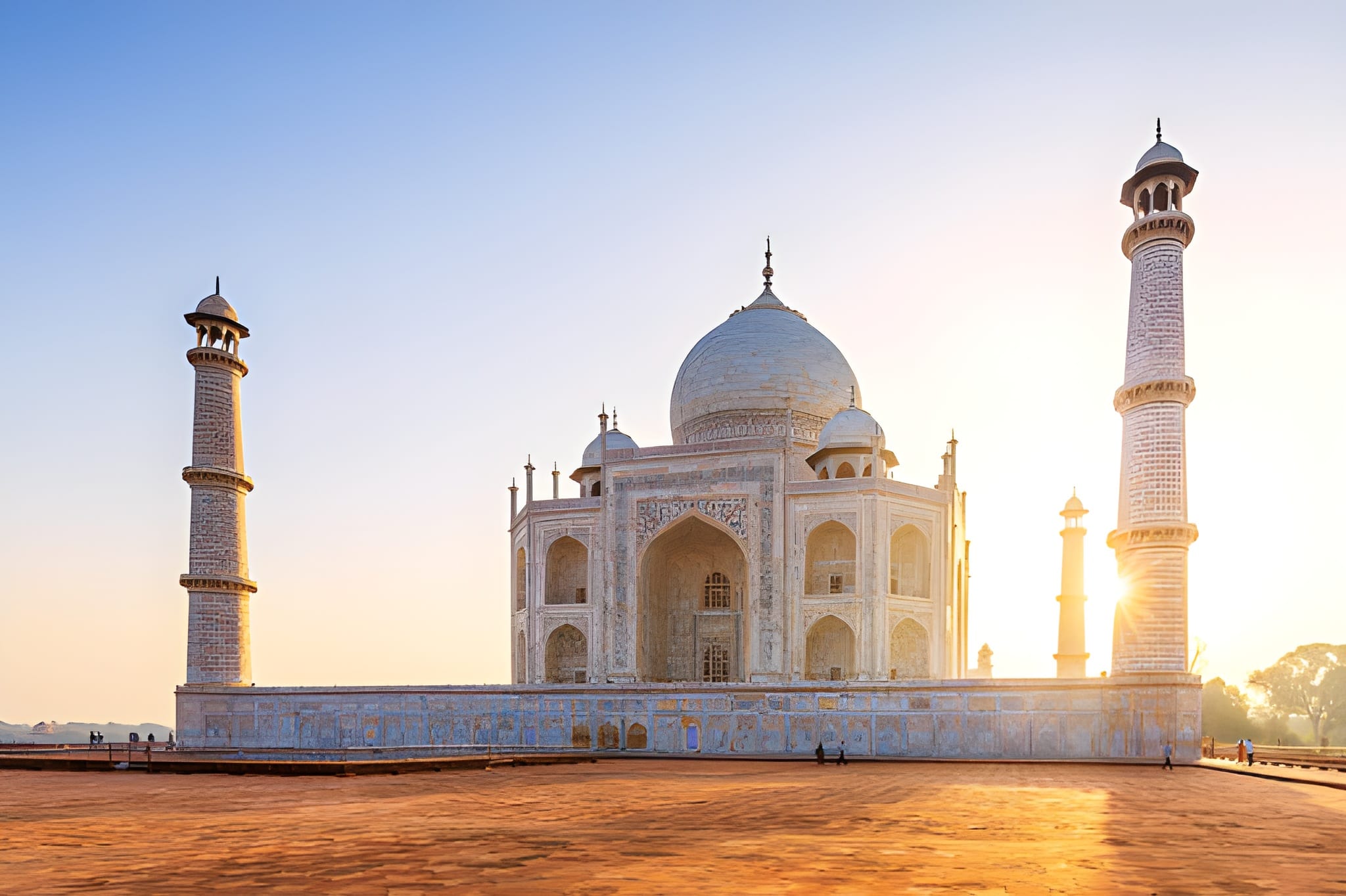The Taj Mahal — one of the world’s most breathtaking monuments — never looks the same twice. Every sunrise, every sunset, and every season paints this marble masterpiece in a new light. Whether you’re visiting during the golden warmth of summer, the misty calm of winter, or the lush green monsoon, the Taj Mahal transforms with nature’s rhythm, offering a distinct and unforgettable experience each time.
At TicketsTajMahal.com, we help travelers experience this timeless beauty year-round with easy online ticket booking, local insights, and flexible tour options.
Spring: Blossoms and Brilliance
Spring (February to April) is one of the best times to visit the Taj Mahal. The gardens surrounding the monument — inspired by Persian and Mughal design — come alive with colorful flowers and lush greenery. The weather is pleasant, making it ideal for morning and evening visits. The soft sunlight enhances the marble’s glow, and gentle breezes from the Yamuna River make the experience peaceful and romantic.
Why visit now: Comfortable temperatures, vibrant gardens, and perfect lighting for photography.
Summer: Golden Hues of Majesty
From May to July, the Agra sun casts a golden shimmer on the white marble dome. Although temperatures can soar, the Taj Mahal’s grandeur during sunrise or sunset is unmatched. Early morning visits reveal a serene, almost mystical atmosphere, as the monument reflects shades of pink, orange, and gold.
Travel tip: Book your entry tickets on TicketsTajMahal.com in advance to skip the heat of long queues and enjoy cooler morning hours.
Monsoon: The Taj in Reflection
When the rains arrive (July to September), the Taj Mahal takes on a dreamy quality. Raindrops glisten on the marble, and the cloudy skies create a striking contrast against the monument’s pure white façade. The reflecting pools become even more stunning, doubling the beauty of this wonder. Though occasional showers may slow sightseeing, the cooler climate and fewer tourists make it an ideal time for those seeking tranquility.
Why visit now: Fewer crowds, stunning reflections, and a romantic, moody atmosphere.
Autumn: Crystal-Clear Views
From October to November, the monsoon clouds fade, revealing clear blue skies. The Taj Mahal looks dazzlingly white under the autumn sun, and temperatures remain comfortable for long walks through the gardens. Photographers especially love this season, as the clarity of the air allows every intricate detail of the monument to shine through.
Perfect for: Clear photos, balanced weather, and comfortable sightseeing.
Winter: A Misty Wonderland
Winter (December to January) brings cool mornings and a veil of mist that gives the Taj Mahal an almost ethereal beauty. As the fog lifts, the marble gradually reveals itself — a breathtaking moment for early risers. The crisp air and golden sunlight make for magical photography, while the daytime temperatures remain ideal for exploring Agra’s other historic treasures.
Pro tip: Visit early in the morning to witness the Taj emerging through the mist — a truly unforgettable sight.
Experience the Taj Mahal in Every Season
No matter when you visit, the Taj Mahal’s beauty never fades — it simply changes form with the seasons. Each time of year offers a unique perspective of love, art, and nature woven together in marble.
At TicketsTajMahal.com, we make your visit seamless and memorable. From skip-the-line tickets and insider tips, everything you need to experience the Taj’s seasonal magic is just a click away.
Book your tickets today at TicketsTajMahal.com — and witness how every season tells a new story of the Taj Mahal’s eternal beauty.










Comment (0)